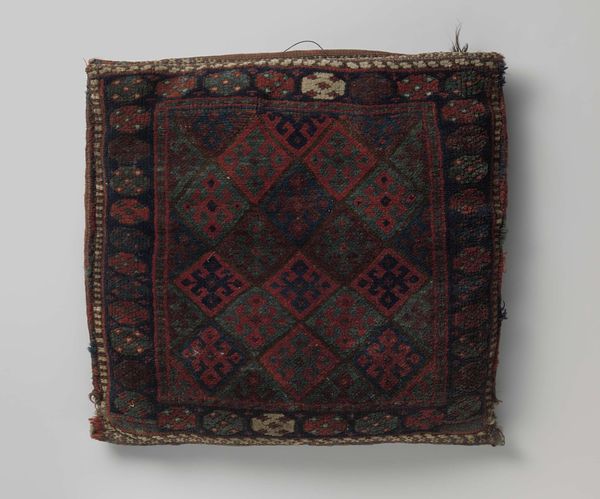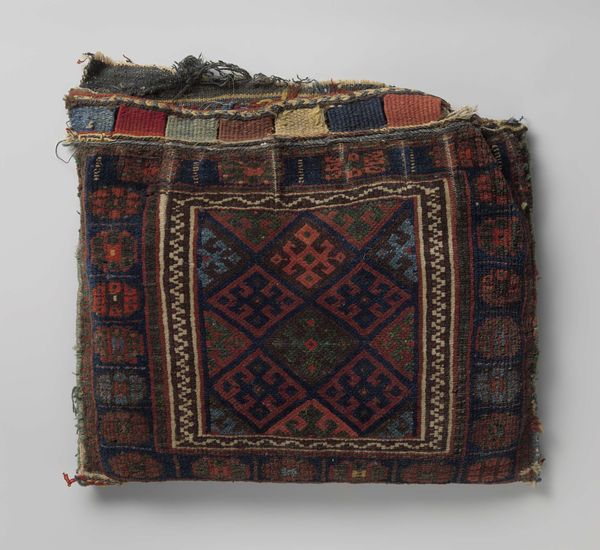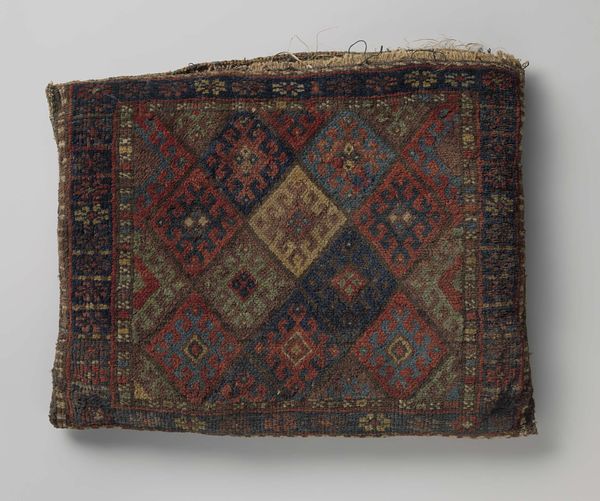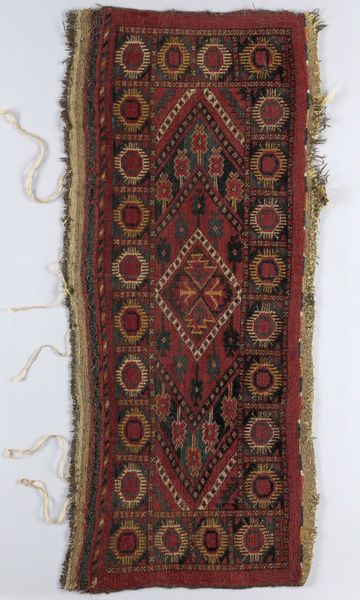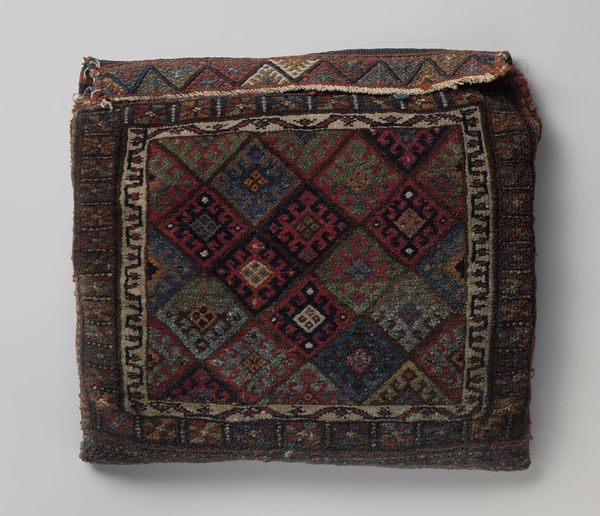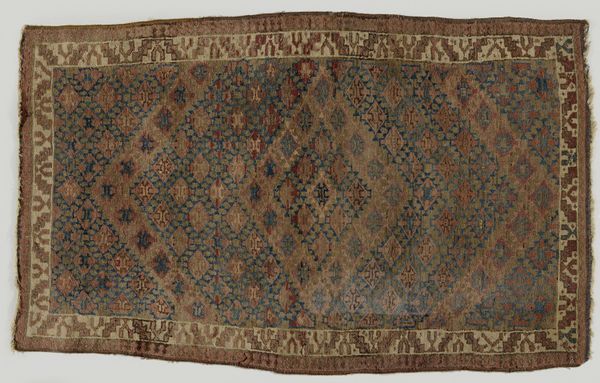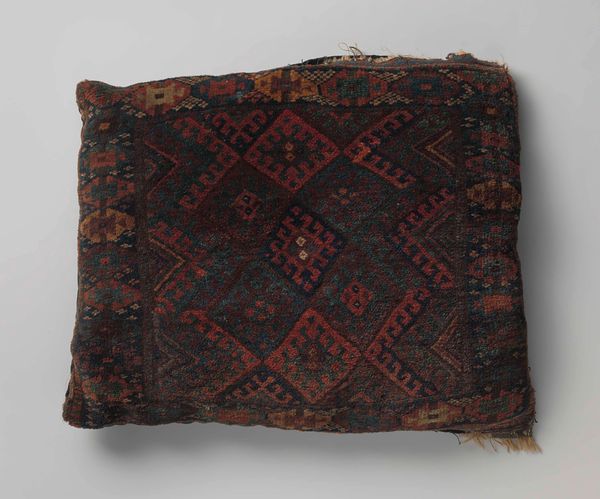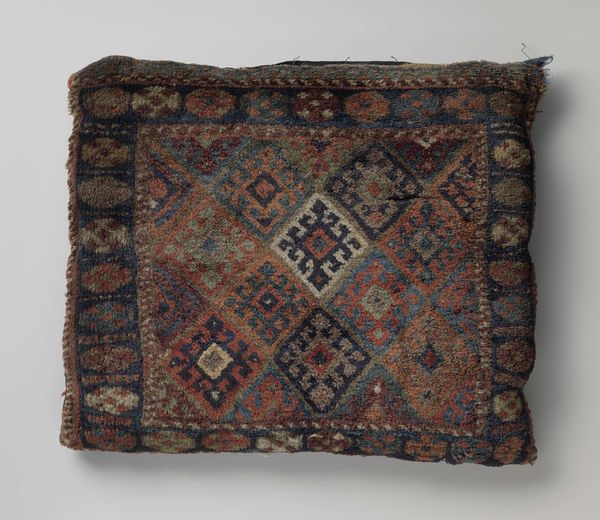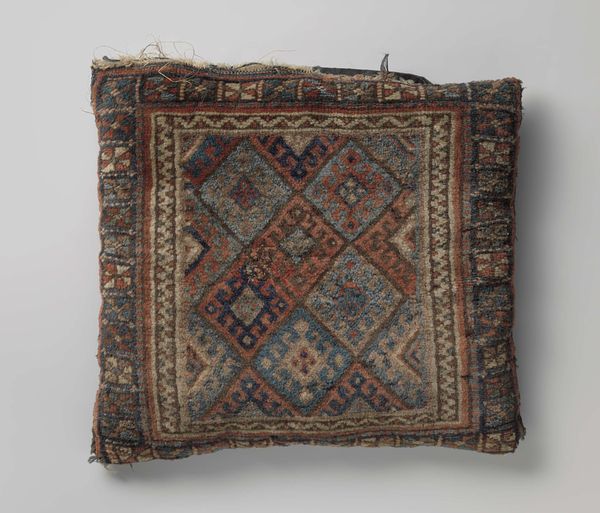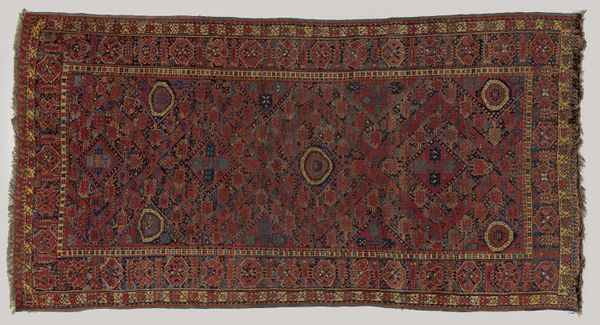
Zadeltas, dubbel, versierd met rasterwerk waarbinnen hakenkruisbloemen c. 1800 - 1975
0:00
0:00
fibre-art, weaving, textile
#
fibre-art
#
weaving
#
textile
#
coloured pencil
#
folk-art
#
geometric
#
imprinted textile
#
layered pattern
#
mixed media
Dimensions: height 100 cm, width 55 cm
Copyright: Rijks Museum: Open Domain
Editor: Here we have what's titled "Zadeltas, dubbel, versierd met rasterwerk waarbinnen hakenkruisbloemen," a woven textile saddlebag from the Jaffi people, dating from approximately 1800 to 1975. It’s densely patterned and feels almost… tactile. What stands out to you about it? Curator: The materiality is definitely key. Consider the labor involved in its production. The weaving process itself, the gathering and potentially dyeing of the fibers… it speaks to a deep engagement with the local environment and the skills passed down through generations within the Jaffi community. What do you notice about the "hakenkruisbloemen", the swastika-like motifs? Editor: They're contained within this intricate grid. It's interesting to see such a loaded symbol presented in what feels like a very different cultural context. Curator: Precisely. Before its appropriation by the Nazis, the swastika was a widely used symbol, often representing good fortune. Its inclusion here challenges a purely Western, post-World War II understanding. How does the fact that it’s part of a functional object - a saddlebag - influence your reading? Editor: That it's not *just* decorative really makes a difference. It’s something meant to be used, to serve a purpose within daily life. The act of using the saddlebag, the movement of it on an animal, makes me think about the circulation of both goods and ideas. Curator: Exactly. It's crucial to understand art's connection to everyday life, its function within a specific community and how cultural exchange shapes material production. This saddlebag shows us that there are no clear divisions between high art, craft, and social practice. Editor: Thinking about it as part of the exchange makes you think differently, rather than focusing only on its design. Curator: Absolutely. Analyzing the materials, the labor, and the use of the saddlebag gives us a far more layered interpretation of its cultural significance. Editor: I'm beginning to appreciate how much history and meaning are woven, literally, into the object.
Comments
No comments
Be the first to comment and join the conversation on the ultimate creative platform.
